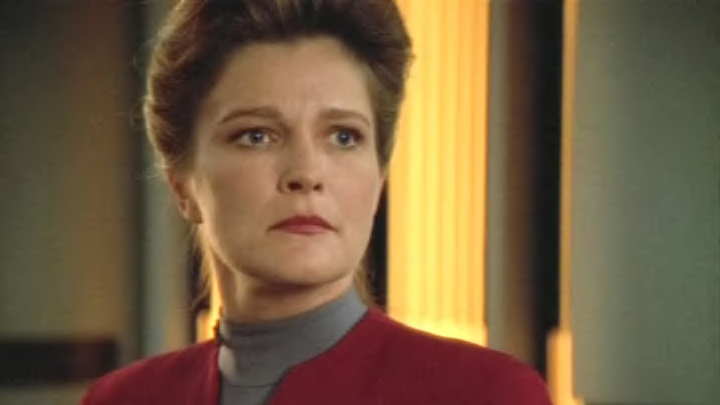The Female Captain
While Star Trek had already introduced Captain Rachel Garrett in the Next Generation as a strong female captain, Garrett’s appearance was for one episode, and she was not the lead of the series. The introduction of Captain Kathryn Janeway in Voyager took Star Trek where it had never gone before. Janeway was portrayed by the great Kate Mulgrew, who brought a brashness to the role that gave her the same level of command as her male counterparts.
Captain Janeway was heavily respected by her peers, and the writers did well by never making the crew question her orders because she was a woman. The show portrayed her command as normal, which is exactly what viewers needed to remove any shred of doubt about her qualifications.
The Diversity of The Crew
The crew of the Voyager was quite diverse. It featured an Asian operations officer in Harry Kim, a Native American first officer in Chakotay, a multi-racial chief engineer portrayed by a black woman in B’Elanna Torres, and a black Vulcan in Tuvok. The introduction of Tuvok as a black Vulcan was particularly striking because it normalized skin color diversity present among other fictional species.
Other Trek series in the Voyager-era had a variety of diverse characters. Deep Space Nine in particular, gave us our first lead black commanding officer. However, Voyager took things a step forward by making the vast majority of main characters either racially or gender diverse.
The Legacy of Voyager
Recent Star Trek series, such as Discovery and Lower Decks, have portrayed a wide variety of diverse characters. The series included various aliens, races, and genders. However, Voyager laid the groundwork and set the example for modern Trek shows to follow. We have now seen multiple lead female commanding officers and people from all walks of life in the modern series. Additionally, shows such as Strange New Worlds have deepened the backstory of previously existing diverse characters which makes them even more compelling. None of that would have been possible without Voyager.
